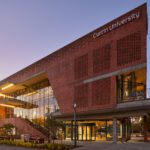Curtin University of Technology engineers are turning their expertise to solving medical problems.
Postdoctoral Research Fellow, Dr Novak Elliott, is one such engineer who is studying Syringomyelia, a spinal disease that has stumped scientists since the 1700s.
By using engineering models, Dr Elliott says he’s able to eliminate non-physical hypotheses, taking us one step closer to finding the possible causes of the disease.
“There are some health problems that can’t be solved by doctors alone,” he said.
“Engineers can assist by using techniques traditionally applied to industrial problems.”
Syringomyelia is a disease involving the build-up of fluid in the spinal cord, which results in the formation of high-pressure cysts.
Although initial symptoms consist largely of pain and progressive numbness, as the cyst expands, the surrounding spinal cord may become compressed, which can eventually lead to paralysis.
Dr Elliott said the cause of the disease had not been proven and treatment remains unsatisfactory.
“The surgical approaches to dealing with Syringomyelia involve disabling the filling mechanism or draining the cyst” he said.
“Unfortunately, this is invasive and less than half of all sufferers of the disease will improve following surgery.
“Through the development of mathematical models, we are able to work out which of the postulated causation mechanisms of the disease are not physically possible, and which ones warrant further investigation.
“Through my research I have been able to demonstrate, for example, that the ‘elastic-jump hypothesis’ for cyst formation is unlikely to apply to humans.
“This theory asserted that the disease may be caused by cough-based pressure impulses creating fluid buildup in the spinal cord via a mechanism similar to shock wave formation.”
Dr Elliott is using his engineering background to study other medical issues such as sleep apnoea.


